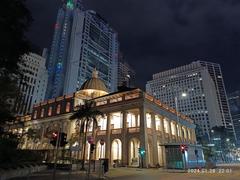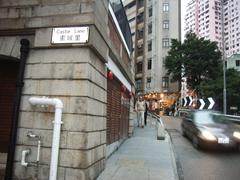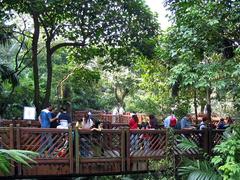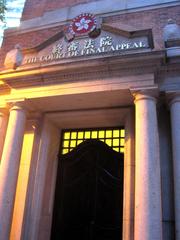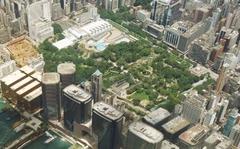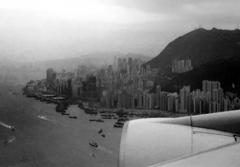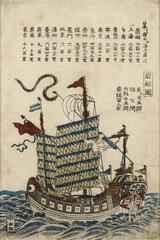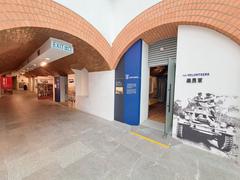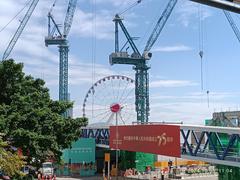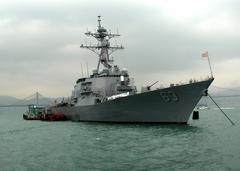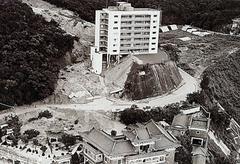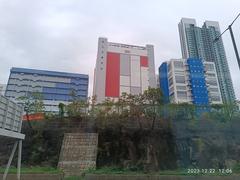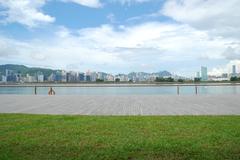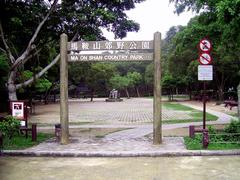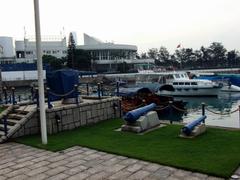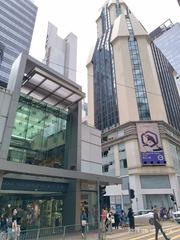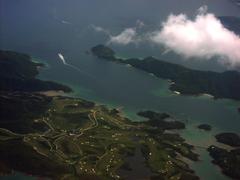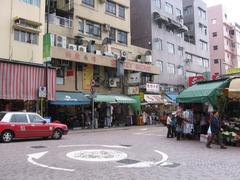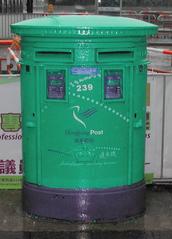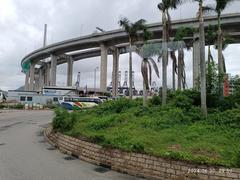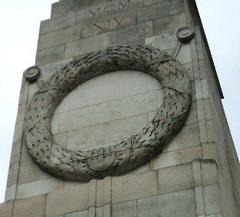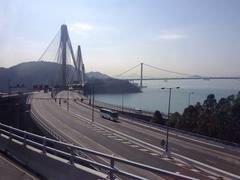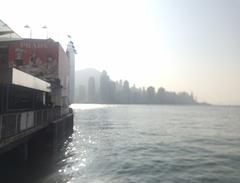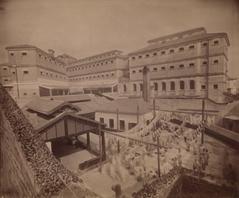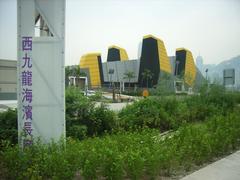Comprehensive Guide to Visiting View Point Tung Lung Hong Kong: History, Significance, Visitor Tips, and Everything Tourists Need to Know for a Memorable Experience
Date: 01/08/2024
Introduction
Nestled off the coast of Hong Kong lies Tung Lung Chau, a captivating island brimming with historical significance, natural beauty, and adventurous opportunities. Central to this enchanting isle is Tung Lung Fort, an 18th-century defensive structure that stands as a testament to Hong Kong’s maritime heritage. Constructed in 1719 during the Qing Dynasty, the fort served as a bulwark against piracy, a rampant issue along the South China coast during that era (The Brain Chamber). Tung Lung Chau is not just a site for history aficionados; it offers a plethora of activities ranging from hiking and rock climbing to exploring ancient rock carvings, making it an ideal destination for all types of travelers (Time Out). This comprehensive guide aims to provide you with all the essential information you need for a memorable visit, including the island’s history, cultural significance, and practical visitor tips.
Table of Contents
- Introduction
- Historical Context
- Architectural Features
- Strategic Importance
- Abandonment and Restoration
- Cultural Significance
- Modern-Day Relevance
- Related Historical Sites
- Visitor Experience
- FAQ
- Conclusion
Explore Tung Lung Fort: Visiting Hours, Tickets, and Historical Insights
Historical Context
Tung Lung Fort, located on Tung Lung Chau Island near the tip of the Clear Water Bay Peninsula in Hong Kong, is a significant historical landmark that dates back to the early 18th century. Constructed in 1719 during the reign of the Kangxi Emperor of the Qing Dynasty, the fort was built as a defensive measure against the rampant piracy along the South China coast (The Brain Chamber). The fort’s construction is often attributed to Cheung Po Tsai, a notorious pirate who later became a navy colonel, although this connection remains a topic of debate among historians (The Brain Chamber).
Architectural Features
The fort’s architecture is a testament to the military strategies of the Qing Dynasty. It was designed to resemble a traditional Chinese village house, with a rectangular one-storey structure, brick walls, a whitewashed exterior, and a red-tiled roof (Culture Hong Kong). The fort’s walls, although partially restored, still stand today, providing a tangible connection to the 18th-century maritime history of the region (The Brain Chamber).
Strategic Importance
Tung Lung Fort was strategically positioned to oversee the narrow Fo Tang Men passage, which commands the Fat Tong Mun Channel. This channel was the original route for junk boats sailing into Hong Kong en route to Canton (Culture Hong Kong). The fort’s location allowed it to serve as a crucial part of a maritime defense system designed to protect trade routes and fend off pirate attacks. Notable pirates who threatened the region included Cheng Lien Chang, Cheng I, and Po Tsai (Culture Hong Kong).
Abandonment and Restoration
The fort was abandoned in the 1800s and fell into ruin. However, it underwent partial repair and restoration work, as well as an archaeological excavation in the early 1980s (Living Out Lau). Despite these efforts, the majority of the fort remains true to its original form, offering visitors a glimpse into its historical past.
Cultural Significance
Tung Lung Fort is not just a military relic; it is a symbol of the region’s rich cultural heritage. It reflects the strategic importance of the South China Sea throughout the centuries and serves as a reminder of the transient nature of military power and the permanence of cultural narratives (The Brain Chamber). For historians, archaeologists, and visitors alike, the fort offers a unique vantage point to immerse oneself in the vigorous ebb and flow of Hong Kong’s multifaceted history.
Modern-Day Relevance
Today, Tung Lung Fort is accessible to visitors who can reach Tung Lung Island via ferry. The site is popular among locals and tourists for its panoramic views and as a spot for outdoor activities like rock climbing. However, it is the fort’s historical allure that continues to captivate those interested in Hong Kong’s past (The Brain Chamber). The fort is part of the Tung Lung Fort Special Area, designated as a Special Area under country parks in 1979, covering 3 hectares and housing the fort and a campsite (Wikipedia).
Related Historical Sites
In addition to Tung Lung Fort, Tung Lung Chau Island is home to other historical landmarks that add to its cultural richness. One notable site is the prehistoric stone carving, the largest ancient rock carving in Hong Kong, measuring 180 cm by 240 cm (Wikipedia). The island also houses the Hung Shing Temple, built before 1931, which features a significant cultural artifact known as the ‘Holy Rock’ (Wikipedia).
Visitor Experience
Visitors to Tung Lung Fort can explore the historical site and enjoy the stunning views of the surrounding area. The fort provides a unique opportunity to step back in time and experience a piece of Hong Kong’s maritime history. The island’s rugged terrain and coastal scenery make it a popular destination for hiking and rock climbing, offering a blend of historical exploration and outdoor adventure (Discover Hong Kong).
Practical Information for Visitors
- Visiting Hours: Tung Lung Fort is generally open to the public from 9:00 AM to 5:00 PM. It’s advisable to check for any changes or special closures before planning your visit.
- Ticket Prices: Entry to Tung Lung Fort is free of charge, making it an accessible attraction for all visitors.
- Getting There: The fort is best reached by a ferry ride from Sai Wan Ho or Sam Ka Tsuen. Upon arrival at Tung Lung Chau, a scenic hike will lead you to the fort.
- Travel Tips: Wear comfortable hiking shoes, bring water and snacks, and prepare for weather changes. The trail can be steep and rocky in parts.
- Nearby Attractions: Don’t miss the prehistoric stone carving and the Hung Shing Temple, both of which offer additional historical and cultural insights.
FAQ
Q: What are the visiting hours for Tung Lung Fort? A: The fort is typically open from 9:00 AM to 5:00 PM. Always check for any updates before your visit.
Q: How much does it cost to visit Tung Lung Fort? A: Visiting Tung Lung Fort is free of charge.
Q: How do I get to Tung Lung Fort? A: Take a ferry from Sai Wan Ho or Sam Ka Tsuen to Tung Lung Chau Island, followed by a hike to the fort.
Conclusion
Tung Lung Fort stands as a prominent symbol of Hong Kong’s regional heritage, reflecting the strategic importance of the South China Sea throughout the centuries. Its historical significance, architectural features, and cultural relevance make it a must-visit site for anyone interested in the rich history of Hong Kong. The fort’s enduring presence serves as a reminder of the region’s vibrant past and its ongoing narrative in the present day. For the latest updates and more travel tips, don’t forget to download our mobile app Audiala and follow us on social media.
References
- The Brain Chamber, n.d., Author source url
- Culture Hong Kong, n.d., Author source url
- Time Out, n.d., Author source url
- Living Out Lau, n.d., Author source url
- Wikipedia, n.d., Author source url
- Discover Hong Kong, n.d., Author source url
- Hong Kong Traveller, n.d., Author source url
- Oyster, n.d., Author source url

